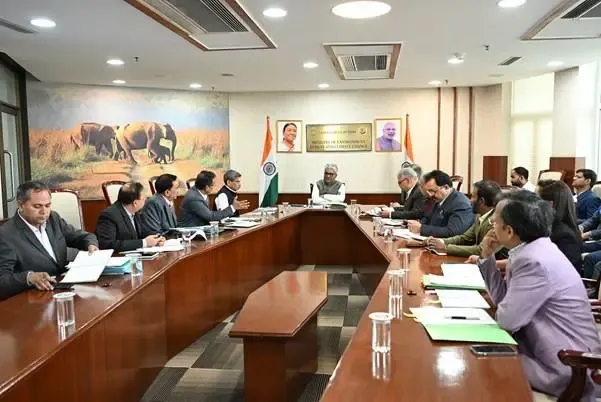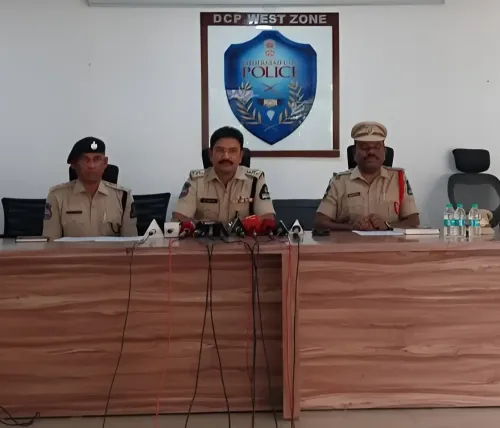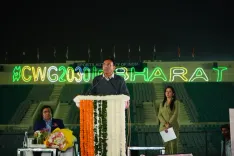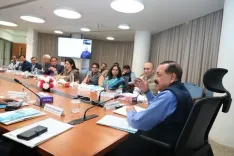How is Union Minister pushing NCR states for a district-wise greening strategy to enhance air quality?

Synopsis
Key Takeaways
- District-wise mapping of forest and degraded lands is essential.
- Community participation is crucial for successful greening efforts.
- Five-year Micro Plans will detail annual planting goals.
- Data on degraded lands will enhance eco-restoration efforts.
- Coordination among states is vital for effective implementation.
New Delhi, Nov 26 (NationPress) Union Environment Minister Bhupender Yadav led a significant review session on Wednesday in New Delhi, urging the NCR states to develop a scientifically structured, technology-oriented, and collaborative district-specific greening strategy aimed at enhancing ecological security and achieving lasting improvements in the air quality of the Delhi-NCR region.
High-ranking officials from the Environment Ministry and Principal Chief Conservators of Forests (PCCFs) from Haryana, Rajasthan, Uttar Pradesh, and the Delhi government participated in this meeting, which targeted the expansion of green cover through careful planning, community involvement, and effective resource integration.
During the session, Yadav evaluated the preparations for the plantation initiatives set for 2026-27 and instructed all NCR states to conduct a detailed district-wise analysis of forest land, degraded areas, public locations, wetlands, catchment zones, community forests, Nagar Vans / Namo Parks, and existing or proposed zoos.
The states were tasked with categorizing these regions by vegetation quality and administrative management to optimize intervention strategies.
The Minister emphasized the need to identify and map all Eco-Clubs in the NCR for their role in raising awareness and actively participating in planting and maintenance tasks, and he expressed a desire for Natural History and its regional centers to take an active role in these greening initiatives, as noted in a press release from the Ministry.
Adopting a forward-thinking stance, the Minister instructed states to formulate five-year district-level Micro Plans that detail annual planting goals, executing agencies, community engagement strategies, nursery capabilities, and financing sources, which may include Green India Mission, Nagar Van Yojana, Compensatory Afforestation Fund, Green Credit Programme (GCP), MGNREGA, and river rejuvenation projects.
Minister Yadav also requested that the Ministry officials create a Five-Year Greening Plan for the National Capital Region by integrating the district-wise Micro Plans devised by the states.
Based on this cohesive plan, coordinated actions will be initiated to ensure necessary facilitation, which, among other advantages, will also aid in fulfilling the greening initiatives monitored by the Commission for Air Quality Management (CAQM), according to the ministry.
The Forest Survey of India (FSI) was tasked with providing data on degraded forest lands and areas affected by invasive species. States were directed to upload information regarding degraded land parcels onto the Green Credit Programme portal to encourage both individual and corporate involvement in ecological restoration efforts.
The Minister underscored that another meeting will be convened shortly to review the progress made by the State Governments and the Government of the NCT of Delhi in this regard.









